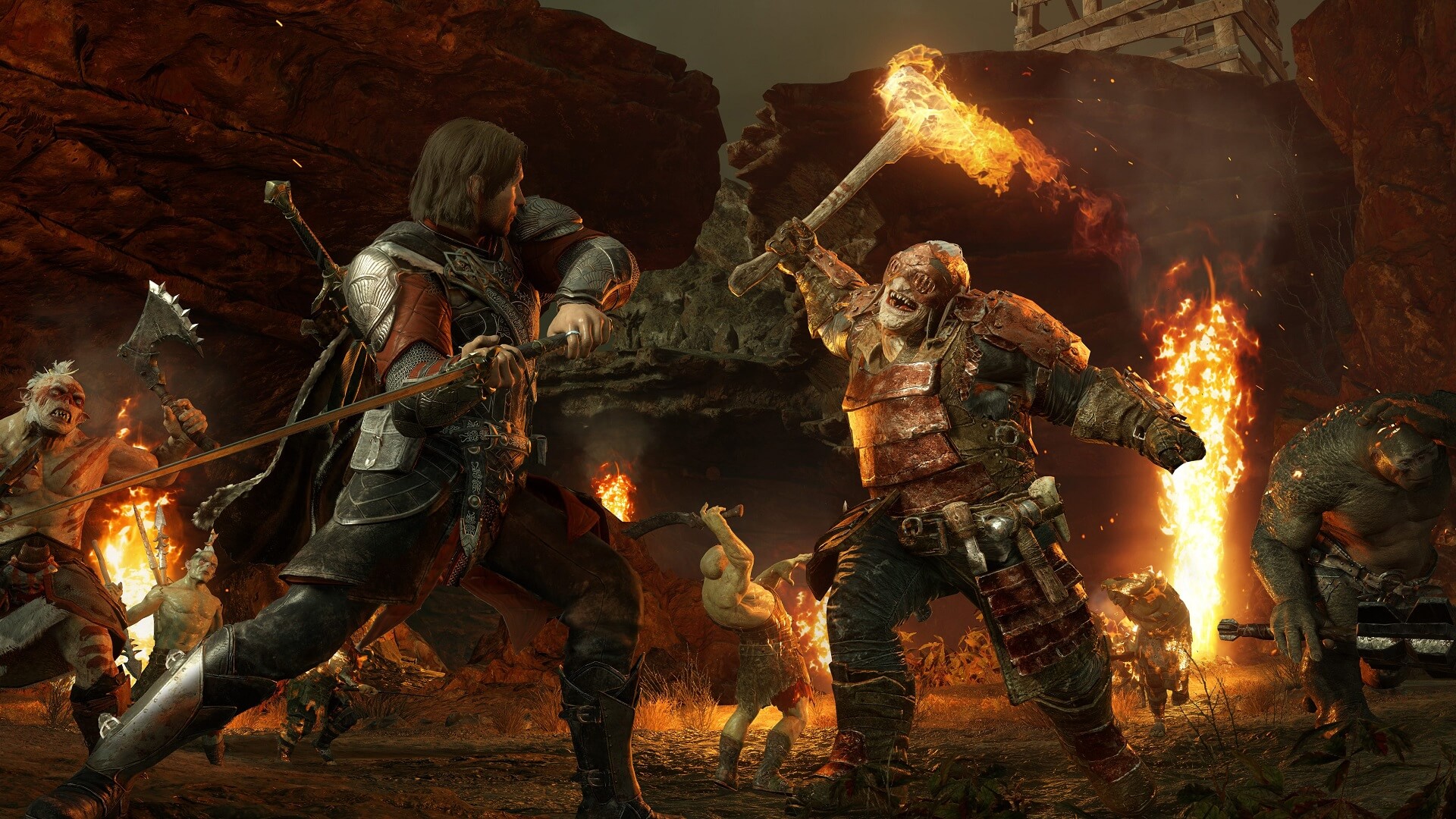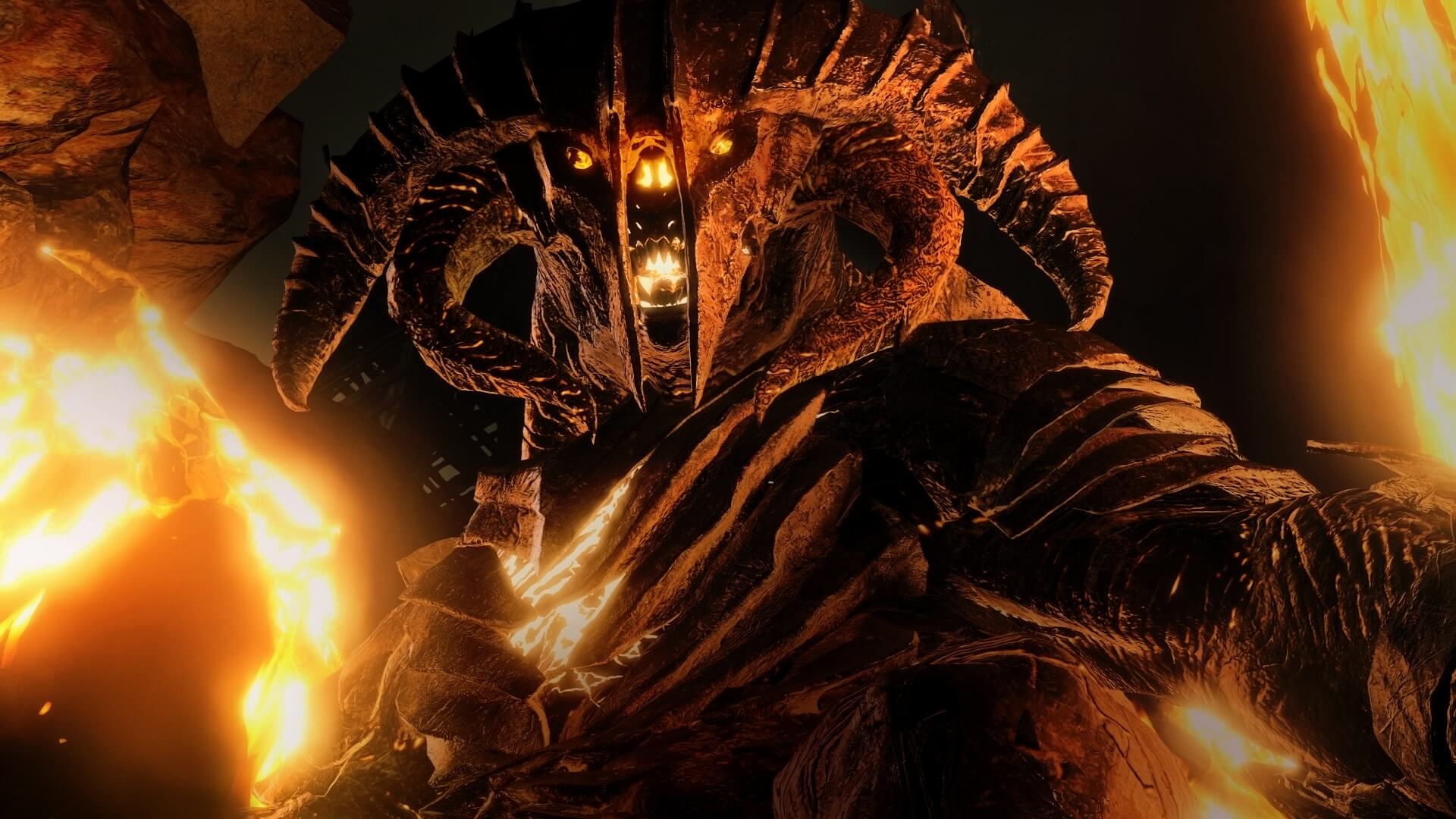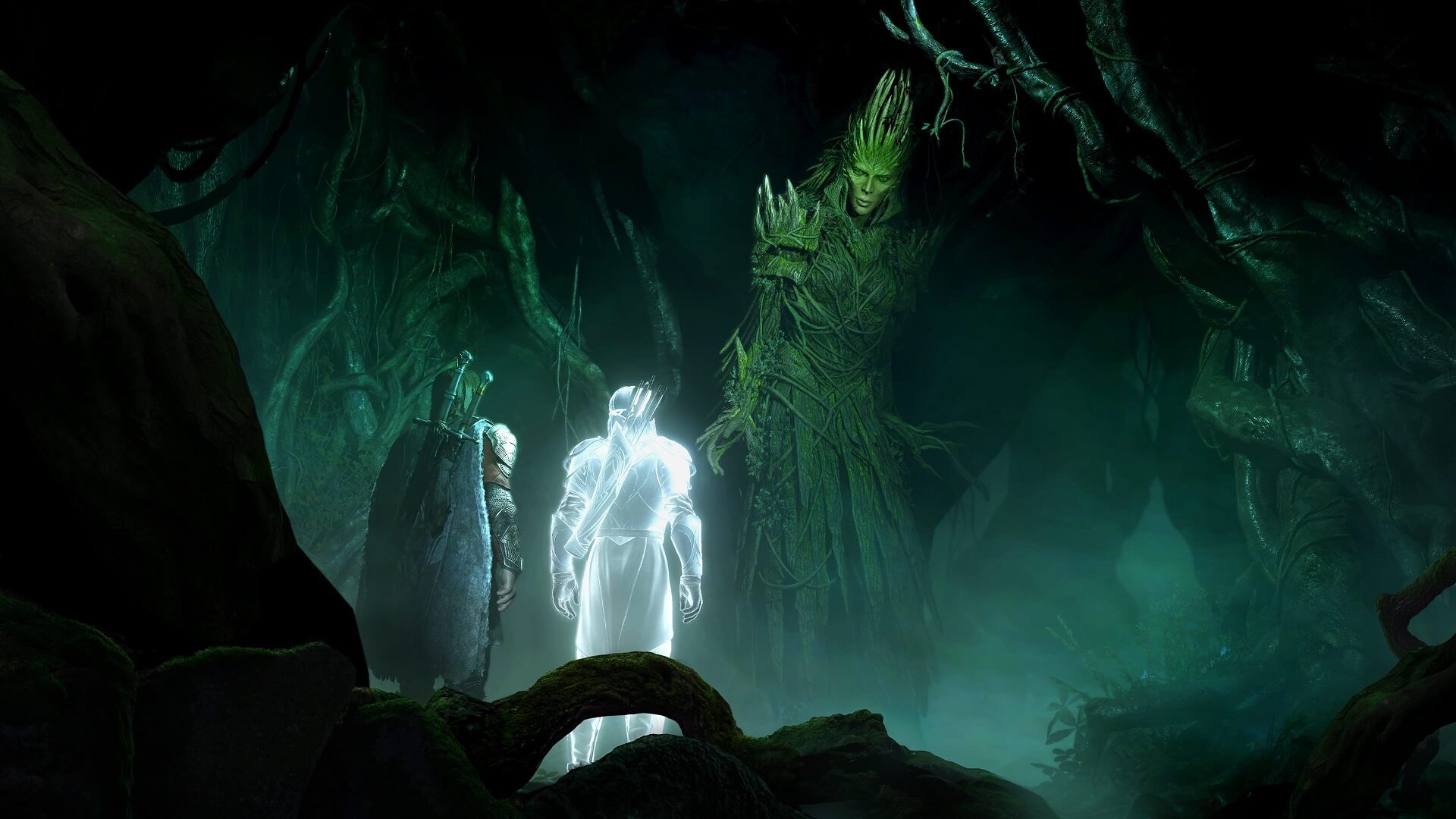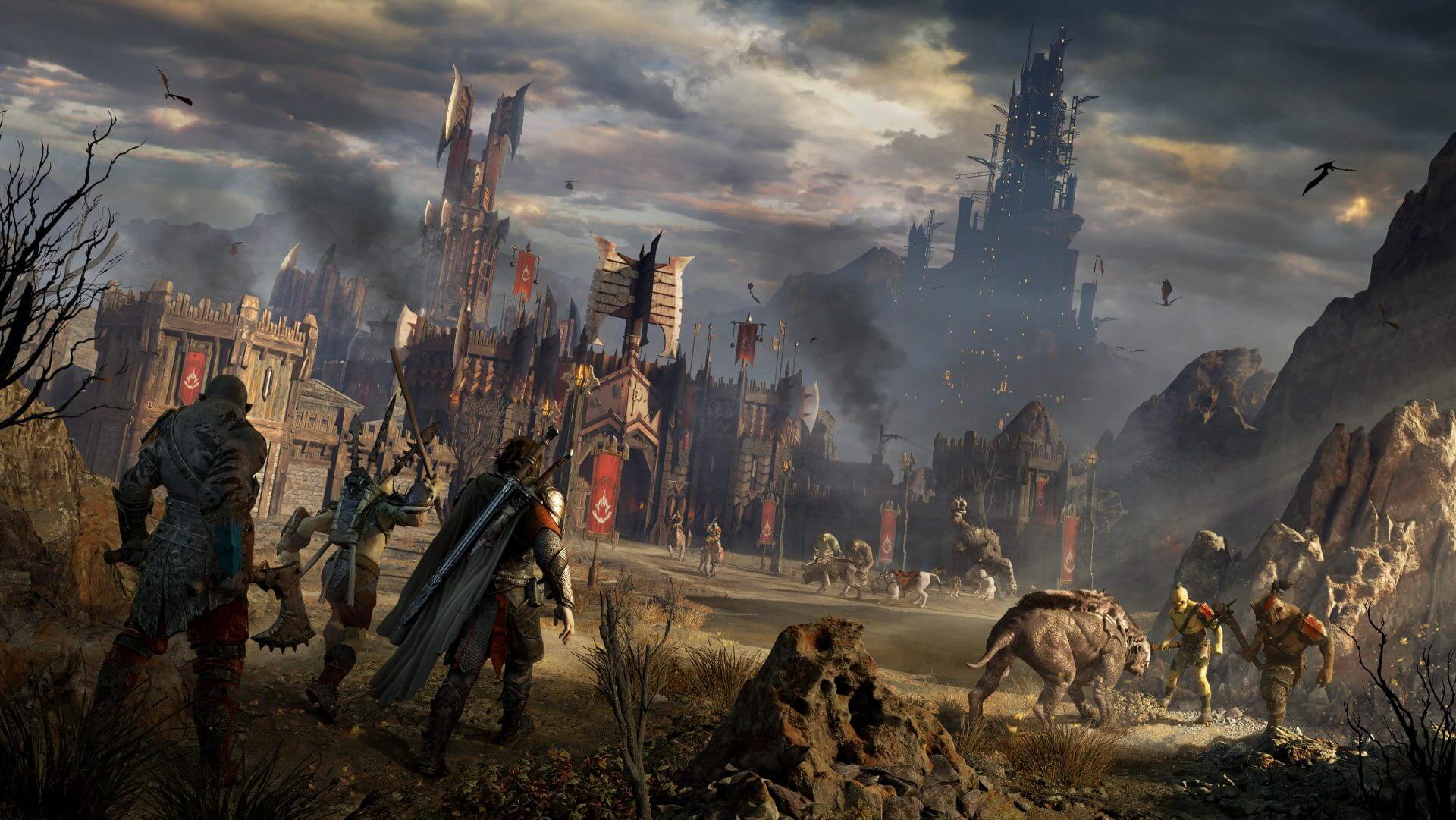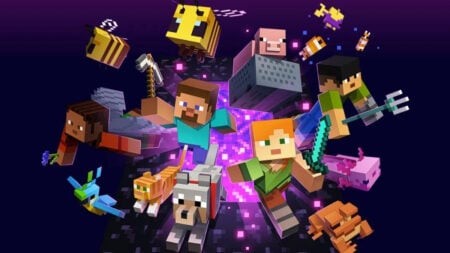Title: Middle-earth: Shadow of War
Developer: Monolith Productions
Publisher: Warner Bros. Interactive Entertainment
Genre: Action Adventure
Official Site: https: www.shadowofwar.com
Release Date: October 10, 2017
Where To Buy It: Retail,
In 2014 Middle-earth: Shadow of Mordor had to be the sleeper hit of the year coming out of nowhere to, in some gamers’ minds, supplant the Assassin’s Creed franchise as the premier third person sword-wielding title at the time. The game featured spectacular combat, graceful acrobatics and an imaginative Nemesis system which created a tangible link between your character(s) and certain noteworthy enemies. All that plus it took part in the universe of some of the most beloved fantasy novels of all time and one of the highest grossing film franchises ever. So yes, it was a no-brainer that we would be seeing a sequel. Three years later Monolith has followed up their initial hit with Middle-earth: Shadow of War.
Shadow of War picks up shortly after the end of the first game. Talion once again becomes entwined with Celebrimbor’s path as he discovers the Elvin Bright Lord has been captured and is being eternally tormented by the mysterious spider lady Shelob. Talion offers the ring he and Celebrimbor forged in order to save his alter ego. The two are once again brought together as a pair in a single body with a new purpose. The two are bound to get their ring back and defeat the evil Sauron whose forces are laying siege to the Gondor city of Minas Tirith.
Monolith begins the main story of Shadow of War in Minas Ithil, a city that is visually similar to other Gondor locations in the Lord of the Rings films, provides an instant familiarity to the world. It also provides a purpose for the first several chapters of the game that does not require a large amount of narrative as every action is bent on helping the army of Gondor deal a blow to Sauron’s plans. Giving mission objectives this deeper meaning is certainly a step in the right direction as Shadow of Mordor was hampered with rambling quests that felt they lacked focus and a connection to the larger narrative.
There is plenty of side missions to extend the amount of gameplay in Shadow of War but it never feels excessive or self-indulgent. While I have come to feel overwhelmed with the dog’s breakfast of icons and missions polluting an Assassin’s Creed map, Shadow of War is sparring and conservative in their additions to your “to do list”. Some missions relive Celebrimbor ‘s heroic acts from years gone by and double as training for newly acquired skills in the RPG lite development trees. Others focus on seeking out certain orc captains to defeat, often highlighted due to the game’s lauded Nemesis system.
In short, the Nemesis system tracks orc bosses that you have had meaningful contact with previously, such as those that may have killed you or escaped your clutches mid-battle. As with Shadow of Mordor, I think I continue to find myself a little underwhelmed with the Nemesis system. For about the first 12 hours of my gameplay I cared little about the orc commanders in the world and, while their disgusting and varied appearances were impressive, I never really cared whom I was locking blades with. This started to change after gaining the ability to dominate orcs about one-third of the way through the story. This ability allows you to begin to form your own army by controlling the minds of top orcs once you have broken them in battle. Suddenly my view of the Nemesis system began to improve. The orcs populating the world and their factions could both help my overall goal. They could partake in my sieges of more important real estate fighting at my side during massive battles. I completely appreciated how the system afforded me the choice to kill of particularly annoying enemies while recruiting those I thought best suited to help me achieve my end goals. These decisions were mine alone and one of the reasons that many gamers playing Shadow of War will have a somewhat unique experience in the game, at least as far as who they ally with is concerned.
Those battles between Talion / Celebrimbor really are where the game shines. The combat is incredibly fluid allowing near-perfect control of your character. There is so much control that at times a fight just didn’t feel fair, much like a cat playing with its prey. I also loved that each attack animation could be immediately interrupted to block orc attacks so that cheap hits taken were few and far between. The orc variety that you get to fight in the game is also incredibly varied. I never felt like I was fighting the same characters over and over even though hundreds of orcs can partake in a single battle. I am no Tolkien expert but combat does include a myriad of monsters and creatures that would be instantly recognizable from the films. Many of the beasts are huge and, at least, several times larger than Talion. This variation means that attacks must be customized to the specific opponent and I was surprised to see that even some orcs learned from repetitious attack strategies, adapting mid-battle to increase a fight’s difficulty. In short, just the combat alone in Shadow of War sets it apart from the crowded third-person action genre. In what can only be described as an embarrassment of riches, the game has plenty more to offer.
Shadow of War is an absolutely beautiful game. Character models, both human and orc, appear to have been painstakingly generated and the worlds are bristling with character and substance. The voice acting is top quality as the lead voice talent do an admirable job. That being said the actors that voice the various orc captains certainly steal the show with some channeling comedy in their performance while others channel anger and dread. All told, the presentation is befitting the highly revered source material that is so dear to so many.
Verdict: Middle-earth: Shadow of War is a rare sequel to a successful video game that surpasses its predecessor at every turn. The story is rich and relevant as is the presentation of the characters and the enemy orcs. The combat system should be the hallmark that all third-person action titles strive to achieve. The game’s best parts do take a little too long to come to light but the wait is well worth it.
[review]

